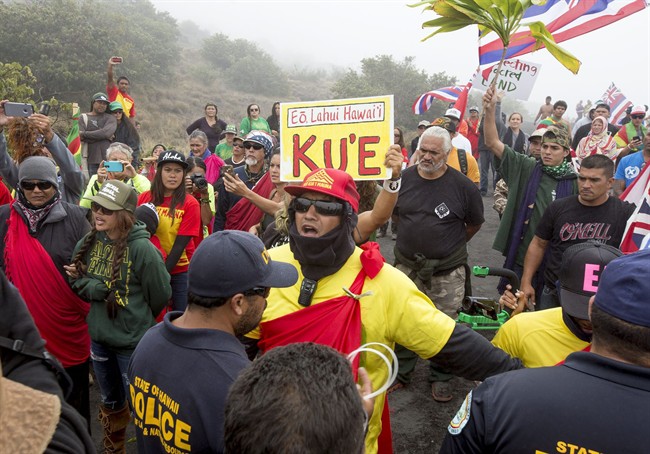Oct 31 (Reuters) — The team behind a project to build one of the world’s largest telescopes said on Monday it has chosen Spain’s Canary Islands in the Atlantic Ocean as a possible alternative to Hawaii.

The decision follows opposition from Native Hawaiians and environmentalists to plans for constructing the so-called Thirty Meter Telescope (TMT), which would cost $1.4 billion, at the Mauna Kea volcano on Hawaii’s Big Island.
READ MORE: Telescope equipment coming down from Hawaiian mountain
Henry Yang, chair of the TMT International Observatory Board, said in a statement the board explored a number of alternative sites for the telescope.
Ultimately, the board selected La Palma, the most westerly of the Canary Islands off the coast of Morocco, as the primary alternative to Hawaii, Yang said.
His statement did not say what made that particular site ideal for the project.
The designation of the Canary Islands as an alternative comes nearly a year after the Hawaii Supreme Court blocked construction of the telescope on the Big Island.

The court found state officials acted improperly when they issued a building permit without holding a process known as a contested case hearing where opponents could speak out.
On Oct. 20, the Hawaii Department of Land and Natural Resources opened a new set of hearings on the project, with a retired judge overseeing those proceedings.
The hearings will last at least several weeks and later the retired judge will issue a recommendation about the project to the state Board of Land and Natural Resources, Dan Dennison, a spokesman for the department, said in a telephone interview.
READ MORE: Eyes on the universe—What the investment in a giant telescope means to Canadians
Yang said the Big Island continues to be the preferred choice of the team behind the telescope and the group will continue “intensive efforts to gain approval” for it in Hawaii.
The area around the summit of Mauna Kea, the volcano, already has 13 working telescopes, according to the website of the University of Hawaii’s Institute for Astronomy.
Astronomers consider the site ideal for observing outer space because of the dry atmosphere above the volcano and because of its distance from urban lights.
Native Hawaiians who oppose the project have said the proposed site for the new telescope on the Big Island is considered a spiritual temple and also is a burial ground, adding the project could harm those sacred lands.

Comments